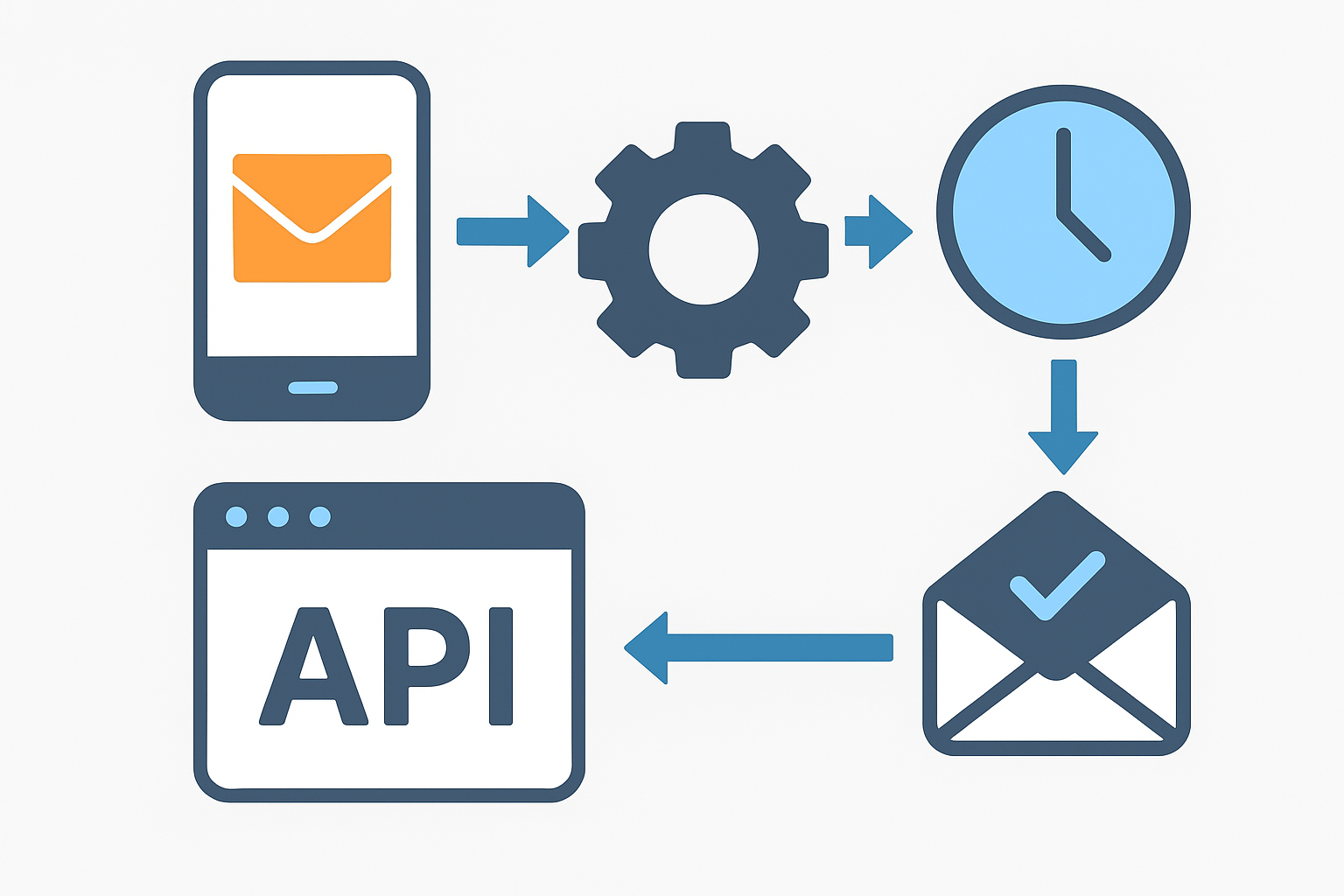In fast-paced development and marketing environments, automating repetitive tasks is key to maintaining efficiency and consistency. Disposable email addresses, which you’d normally generate manually for quick sign-ups, can also be scripted into your pipelines and workflows. By integrating EyadMail.online’s API and browser tools, you can programmatically create, monitor, and retire temporary inboxes—saving time and reducing errors. This article provides a comprehensive, step-by-step guide to embedding disposable email automation in your daily processes.
1. Define Your Automation Goals
Before diving into code, clarify why you need disposable email automation:
Bulk Testing: Spin up hundreds of addresses to verify form submissions and user registration flows.
One-off Campaigns: Auto-generate emails for limited-time promotions, ensuring each recipient group has a unique sandbox.
Scheduled Cleanups: Automatically discard expired addresses and archived messages after test cycles.
Setting clear objectives will guide your choice of tools and the structure of your automation scripts.
2. Set Up Your EyadMail.online API Credentials
To interact with EyadMail.online programmatically, you’ll need an API key:
Log In: Navigate to the EyadMail.online dashboard.
Generate API Key: In “Settings” → “API Access,” click “Create New Key.”
Secure Storage: Save the key in environment variables (e.g.,
EYADMAIL_API_KEY) rather than hardcoding it in scripts.
Having your API credentials ready is crucial for secure, authenticated automation.
3. Automate Address Generation
Use a simple script to request new temporary addresses:
bash# Example using curl (Shell)curl -X POST "https://api.eyadtmail.online/v1/addresses" \ -H "Authorization: Bearer $EYADMAIL_API_KEY" \ -H "Content-Type: application/json" \ -d '{"lifetime":3600}'
lifetime: Time-to-live in seconds (e.g., 3600 for one hour).Response: Returns a JSON object containing the new
emailandid.
Integrate this call in any language or CI/CD pipeline that supports HTTP requests.
4. Poll for Incoming Messages
To fetch emails sent to your disposable address, poll the API:
python# Example in Pythonimport os, requests, timeapi_key = os.getenv("EYADMAIL_API_KEY")address_id = "REPLACE_WITH_ID"headers = {"Authorization": f"Bearer {api_key}"}whileTrue: resp = requests.get(f"https://api.eyadtmail.online/v1/addresses/{address_id}/messages", headers=headers) messages = resp.json().get("messages", []) if messages: for msg in messages: print(f"From: {msg['from']}, Subject: {msg['subject']}") break time.sleep(15) # wait 15 seconds before retrying
Polling Interval: Adjust based on expected email arrival times and rate limits.
Message Processing: Parse JSON payload to extract
subject,body, or attachments as needed.
5. Integrate with Browser Extensions
For front-end or QA teams, browser extensions offer GUI-based quick testing:
Install EyadMail Extension: Available on Chrome Web Store or Firefox Add-ons.
Auto-Fill Feature: After generating an address via API, the extension can auto-fill registration forms.
Inbox Shortcut: One click opens the disposable inbox in a new tab, reducing context switching.
Browser tooling complements API scripts by providing manual override points for exploratory testing.
6. Schedule Cleanup Jobs
Legacy or expired addresses should be purged to avoid clutter:
bash# Shell script for cleanupcurl -X DELETE "https://api.eyadtmail.online/v1/addresses/{address_id}" \ -H "Authorization: Bearer $EYADMAIL_API_KEY"
Cron Jobs: Set this command to run daily or hourly depending on your project timeline.
Automated Retention Policies: Some API plans allow you to define auto-delete rules when creating an address.
7. Monitor Usage & Quotas
API-based automation can rapidly consume rate limits or quotas:
Track Requests: Log API calls with timestamps to identify spikes.
Error Handling: Implement backoff strategies (e.g., exponential delays) when encountering 429 (Too Many Requests) responses.
Dashboard Alerts: Use EyadMail.online’s monitoring tools or integrate with Slack/Teams notifications for quota warnings.
Staying proactive prevents interruptions during critical testing phases.
By following these steps—defining objectives, scripting API calls, leveraging browser extensions, and setting up cleanup and monitoring—you can seamlessly automate disposable email workflows. This not only reduces manual overhead but also standardizes testing and registration processes across teams. Whether you’re a developer, QA engineer, or marketing specialist, integrating EyadMail.online into your automation stack elevates productivity and maintains a spam-free primary inbox.

